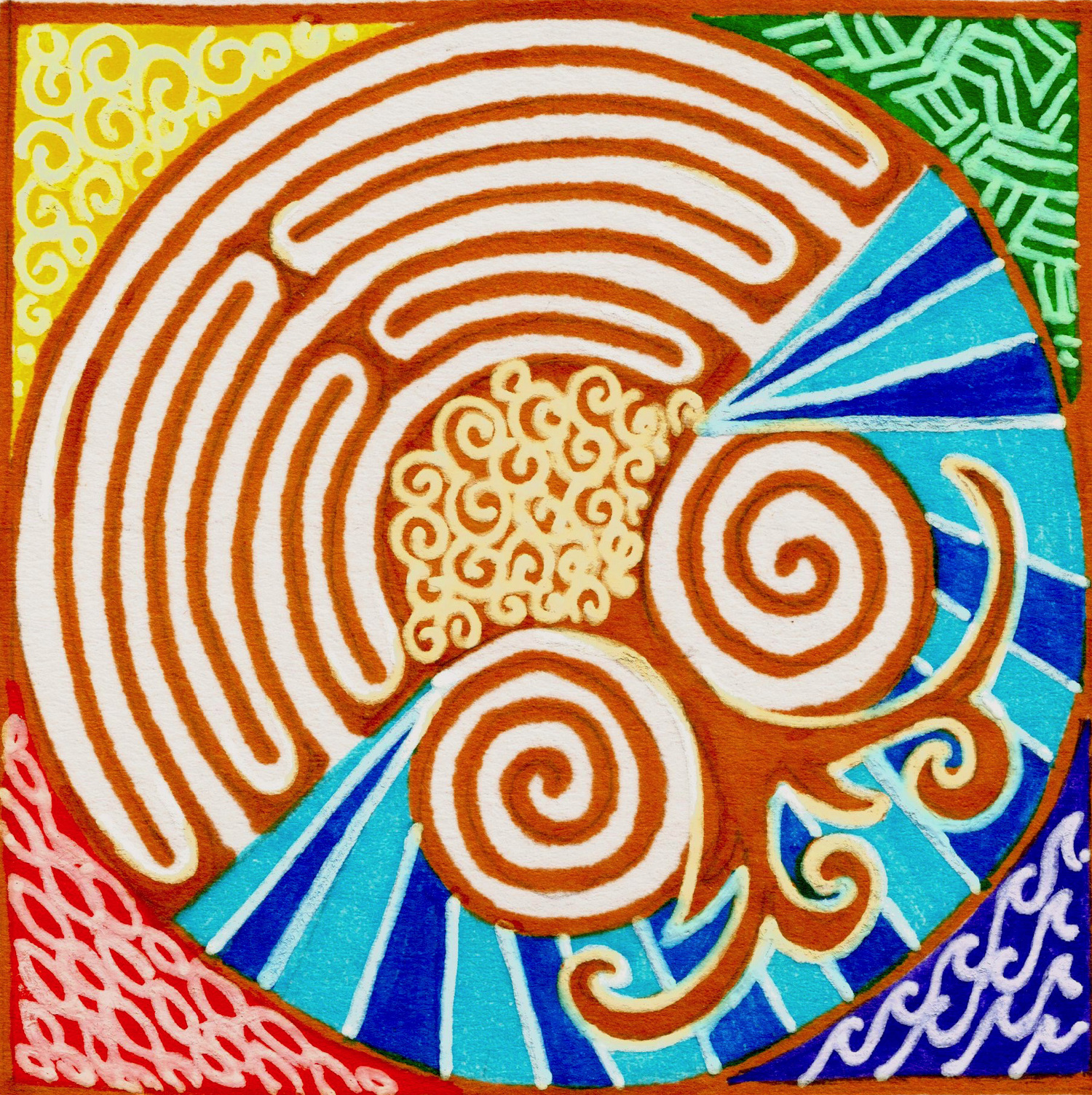Elk Rock Garden, November 2017, taken by the author
I didn’t expect her journey to last this long. But it has. Three weeks have passed since the heart “event” that tipped the scales in favor of dying “sooner” versus living “longer.” Three weeks of decline with brief rallies. From spending her days in her chair, engaging with company between long naps and eating small meals, to being bed bound. She spends the hours in deep sleep, sometimes restless, no longer outwardly responding to my voice. I accept after each visit it may be the last time I experience her warm skin against mine. But no phone call awakens me in the wee hours and when I visit the next day, I hear she opened her eyes for a few moments or used the bathroom (being a proper lady, this seems deeply ingrained!) or closed her lips to sips of water. She is not gone. Nor is she here. Straddling two worlds. Not ready. And my mother is still teaching me, even in this final stage of her life.
When I was actively working with hospice patients, the metaphor of death being the mirror image of birth was one I often used to help families understand what was happening in the final stages of dying. And it was comforting. I still see many similarities. Just prior to birth, we are curled in the womb awaiting the call to transition into the passage out. It is an arduous, messy journey, leaving a place of security. Upon entry into the new world, first breaths are taken, sometimes as raucous gasps. The amniotic water that sustained us pours out of the womb as we begin this life journey. We have arrived.
In an idealized, metaphorical sense of birth, midwives accompany women in the birthing process—coaching, comforting, companioning. When the baby arrives, there is a welcoming committee to care for mother and child in the first days. To help them rest for the years ahead.
In the natural state of dying, our body starts to draw inward, sometimes curling into a fetal position. Food and water are no longer needed as sustenance for abiding in this world. At the end we let go of our breath, sometimes with a heavy last sigh, sometimes with a slight exhale. It isn’t only the body that draws inward, but the emotional and spiritual self is also tending to inner work. And as birth is messy, so is dying as the body releases what is no longer needed. And while hospice care is comfort care, like in birth, sometimes pain can’t be avoided, especially pain around “unfinished business.”
So yes, many similarities. But this is where the intimacy of being with my mother during her dying has deepened my understanding of the end-of-life journey. In birth, you have a “host,” the mother, who nourishes, carries, supports the child. The baby in the womb grows and takes its natural cue when to enter the world. And the midwife and other companions have the role of coaching, comforting, supporting the mother and family and being ready to “catch” the new life upon entry. The baby has one task—to safely arrive in the world. There is no “inner work” to do, just head on out, so to speak.
With the dying, the individual is the host or “womb” to their own dying self, holding space for the soul to be nurtured to the point of letting go. The soul is also in the “womb,” being held and assured while doing the difficult work of leaving behind all that is known, all that has been lived, until sustaining the courage and grace to transition into the passage and leave the body. A duality.
As bystanders we can comfort. We can be present. But ultimately we are only witnesses. Sacred witnesses, yes. But unlike a midwife, we won’t be “catching” a soul at the other end and welcoming them. We will witness the fading of life as it leaves the body.
So my mother in her lingering journey continues to teach me. She is offering me gifts I could not receive from my patients because I did not have the intimate relationship with them I have with her. I could not sit with them for hours and days. Knowing her as a gentle and caring person, I did not imagine she would struggle, and yet her restlessness indicates otherwise. It is difficult to watch
I cannot “midwife” her out of this life and neither can her hospice team. We can only witness this sacred journey of her birthing her own self into death. If this seems counterintuitive, mysterious, then that is consistent with what I have learned with witnessing the dying of many and the birth of my own two children. Mystery is integral at both ends of this embodied journey on earth. It is a mystery I will never solve until my own last breath.
***************************************************************************
If you have sat beside someone over time as they were dying, what did you notice? If you have had fears about being with someone as they die, can you imagine yourself as a sacred witness? If so, what does that look like? If not, what image is helpful for you?
Upcoming Retreats and Workshops:
Hidden Beauty of Grief: Growing Through Loss
Journey Through Loss: Exploring Grief and Loss Through the Archetype of the Labyrinth
“My mother is still teaching me, even in this final stage of her life.
”
Nature is messy too. Bainbridge Island, Oct 2017.
“...as birth is messy, so is dying as the body releases what is no longer needed.”







